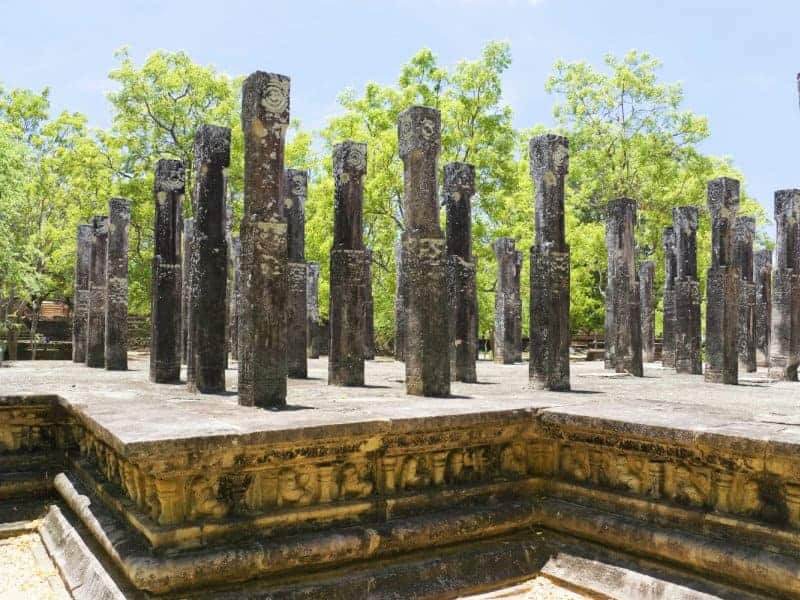Alahana Pirivena is among the largest and most famous ancient pirivena complexes in Sri Lanka. It belongs to the reign of King Parakramabahu I of Polonnaruwa, who reigned during the mid to the late 11th Centuries AD. Alahana Pirivena itself stands out as one of the most unique historical places in Sri Lanka, being built on a series of rocky terraces in a rather idyllic Dry Zone countryside, albeit it is still wetter than the Anuradhapura region when it rains.
Some of the buildings of the Alahana Pirivena Complex include the famed Buddha Seema Pasada, the brick chapter-house for the monks. It is now in ruins, but must have been massive in its heyday. Alahana Pirivena was pretty much the main center of Buddhist studies during the early medieval era, during which time the Polonnaruwa Kingdom was at its most powerful.
There is not just one large chapter-house but several on the many terraces that make up the Alahana hinterland. Some of the chambers are larger than others, and may have been well-furnished. These big rooms might have housed the most important of the resident monks. One of these has a moonstone at its entrance. It is rectangular, not a semicircle as is the normal for this kind of carving. It is fairly minimalist but unique in design, with no mammalian images but a row of swans, as well as a lotus in full bloom not a semi-formed image.
One of the most impressive buildings in this complex is the Lankathilake Image-House. It contains a massive standing Buddha image, over forty feet in height. Lankathilleke itself is one of the largest of its kind in the country. Little frescoes dominate the walls of Lankathilleke, while the roof was a vast dome, now lost in time. The Rupavati Stupa lies to the north of the Lankathilleke Image-House. It was done under the patronage of Queen Subadhra, one of the king’s wives.
Written by Vasika Udurawane for Travel Lanka Compass



0 Comment